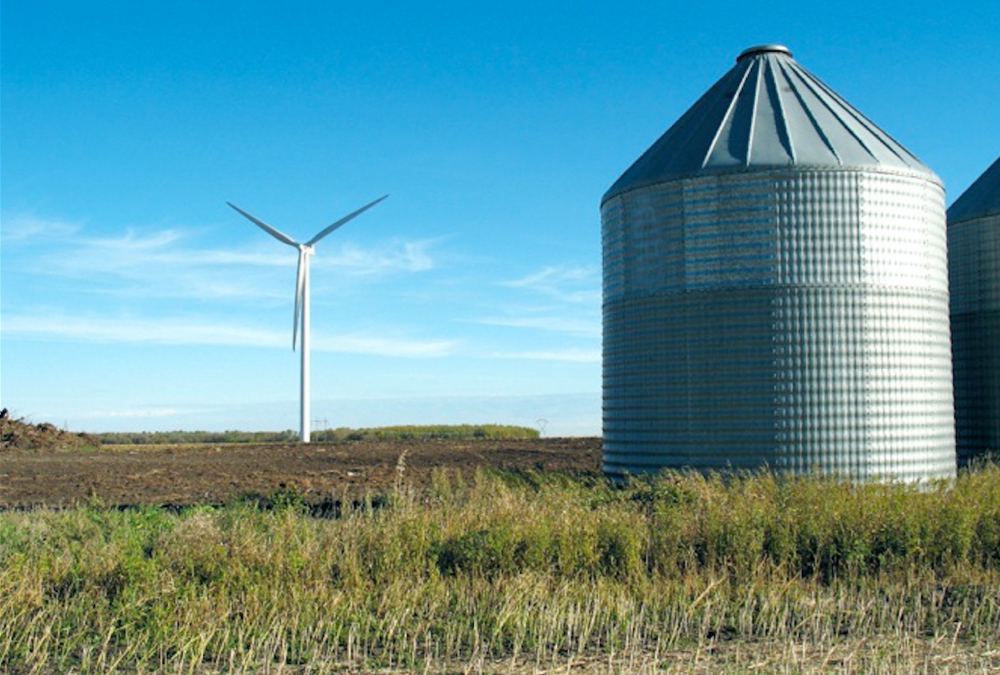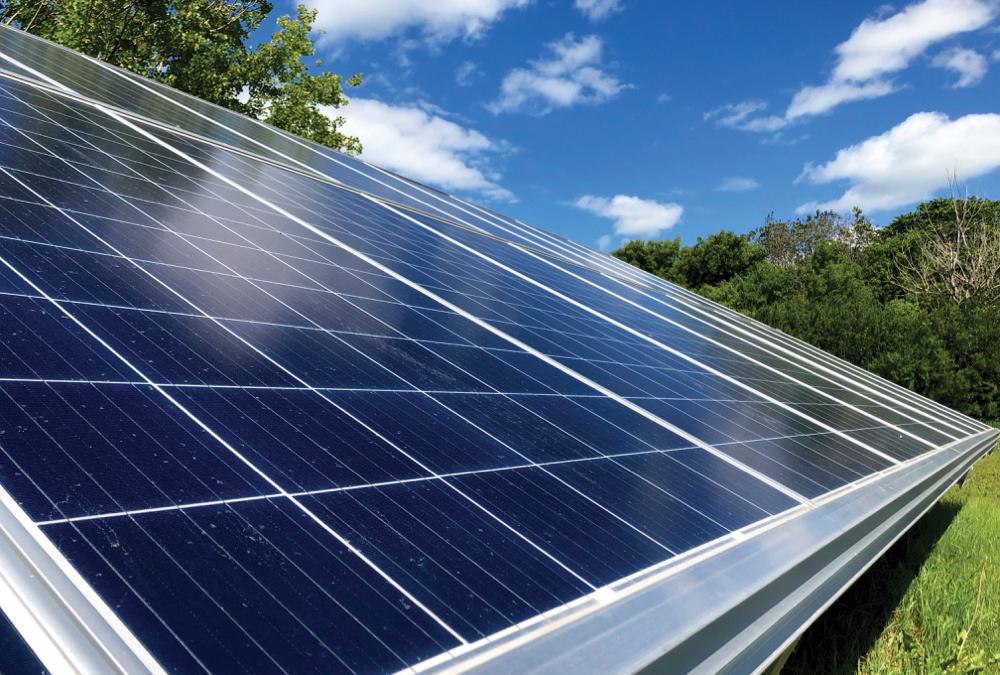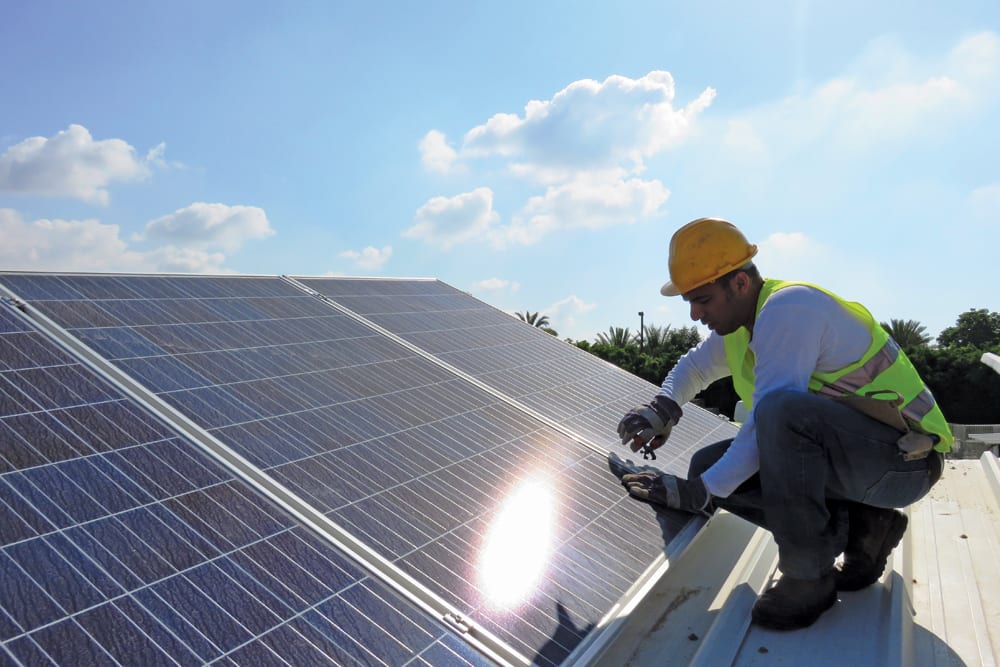For some producers, summer means doubling down on the power of the sun.
Andy Kirschenman and his father have been running their 5,000-acre grain farm near Hilda, Alta. for six years using solar power.
“It’s been a positive experience without a doubt for us,” Kirschenman said. “We’re actually able to offset all of our bills, not just the power side of it, but all of our distribution and fixed costs too. So we actually don’t pay a power bill all year round.”

Parts of Western Canada are experiencing “a solar gold rush,” said Greg Sauer, vice-president of sales at SkyFire Energy.
Read Also

Journal pulls long-cited glyphosate study for ethics violations
The journal Regulatory Toxicology and Pharmacology has retracted a 2000 Monsanto-linked glyphosate review, drawing new scrutiny as Bayer faces mounting legal pressure.
That’s partly because solar PV (photovoltaic) panels have plunged in price and higher energy costs are pushing more people, including farmers, toward small-scale renewable energy production.
Solar is leading the way. For example, in Kirschenman’s home province, more than 89 per cent of Alberta’s 11,991 micro-generation sites are solar powered.
“I don’t think it’s a huge secret or surprise to most to learn that Canada is electrifying,” said Sauer. “The federal government is pushing us that way through carbon levies and other measures. This allows producers, farmers to take control.”
Micro-generation gives users ownership over the source of their energy with installations designed to offset annual use. Some producers capitalize on the sun by leasing land to solar companies, but Sauer said that doesn’t protect them from volatile electricity prices.
“If you want to actually hedge against future increases for your own energy consumption, micro-generation is for sure the way to go.”

Solar is scalable and Sauer said there’s little to prevent a producer from getting started.
“When it comes to electrical, as long as the lines feeding the property aren’t tapped out for whatever reason, then everything is upgradable and can be modified,” he said.
Commercial installations vary in price and larger ones are more economical. Government incentives help offset costs.
For Kirschenman, solar worked because grant money was available. He saved 35 per cent on the cost of his system through a 2017 solar rebate program under the NDP government in Alberta.
“We crunched the numbers and it didn’t make sense if there wasn’t the grant and it did make sense if there was,” Kirschenman said. “It was not an ideological reason at all. It was purely economical.”
Paying $65,000 for his 40 MWh (megawatt hour)/year installation, he powers his shop, seed cleaner, aeration fans and both homes on his land. He said he may use more than he generates in rainy years, when the grain needs more drying, but that is not usual.
Panels come with 25 to 30 years of power output warranty and there are no moving parts, so costs are almost all up front.
Inverters or DC optimizers may need replacement or repair, but Sauer said those expenses should be included in the installation’s financial evaluation and economic model.
“Solar isn’t ‘no maintenance,’ but it is very low maintenance,” he said. “There’s really not a lot to be done but planning for probably an end or replacement as it happens.”
When getting started, Kirschenman said the most important step is choosing a good partner.
“Find a reputable installer who will help you through the entire project from siting to permitting to grant applications and everything like that into installation and startup,” he said.
Sauer agrees.

Solar is well established in Canada and word of mouth is a good way to find a company with a proven track record, he said.
“Someone that’s been in the market understands the different opportunities for savings, whether that be transmission and distribution charges, whether it be carbon offsets, there’s some stackable opportunities there,” he said.
“Just try and avoid the higher pressure kind of sales pitches and promises that maybe don’t have the track record.”
Producers should be cautious about guarantees for return on investment, Sauer said, because energy prices aren’t predictable. That said, anyone comfortable with a 10- to 15-year payback will be happy with the result, he added.
“The economics of it is definitely something that we’re impressed with,” Kirschenman said. “I think we’ll have payback quite a bit quicker than we actually thought just because of how power prices have gone up.”
Initially expecting a 20-year turnaround, Kirschenman now thinks it will occur in 11 or 12 years, making for a 10 per cent ROI.
Agriculture and solar can work together and new technologies and approaches are increasing the range of opportunities, said Sauer. These include mounting panels on floating structures on irrigation ponds or other water bodies, growing crops beneath ground-mounted installations, and grazing animals. The latter is being done at Strathmore Solar, a 320-acre, 40.5-megawatt facility in southern Alberta.
“A ton can be done both from animal husbandry and crop perspectives such that the land is producing energy and also producing food,” Sauer said. “There’s absolutely no reason why they can’t be synergistic and fully compatible.”















